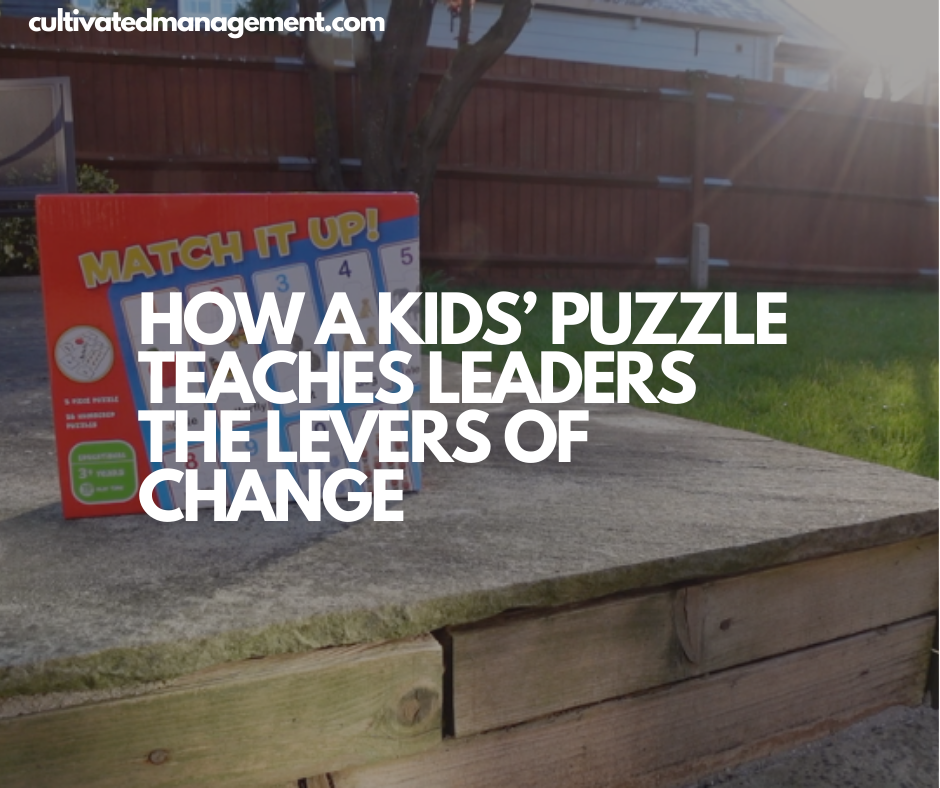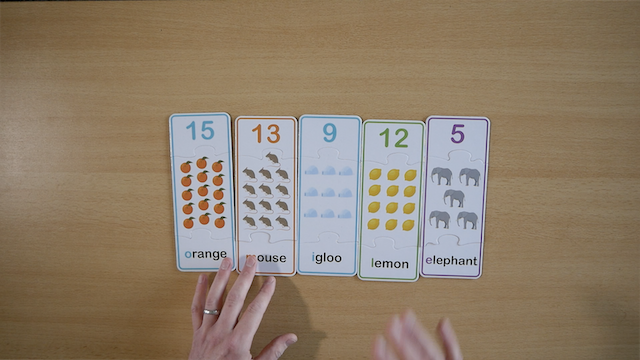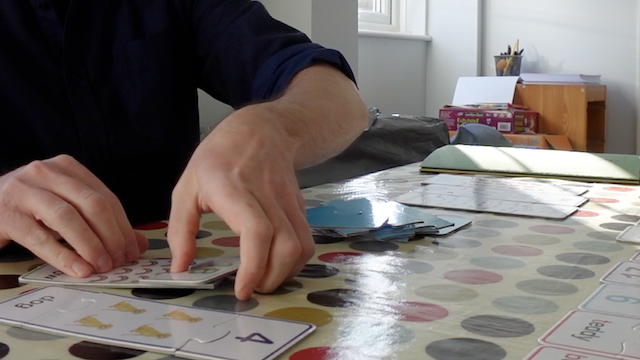
Yes, I use a kids’ puzzle to teach leaders about releasing business change. It might sound childish, but it’s fun — and more importantly, it works.
The puzzle game helps explain why a clear and positive future is essential, and how growth and delivery happen when we remove obstacles and align people around the right work. Effective communication underpins all of this.
In this article (and video) I’ll share:
- The history of the puzzle and how it became a teaching tool
- Step-by-step instructions for running the game yourself
- Key lessons leaders can take back into the workplace
The History of the Puzzle
The first time I ran this exercise, I lined up 25 managers and executives in a hotel conference room. I worried they’d think it was a waste of time. But the result? They loved it. They were engaged, competitive, and came away with surprisingly deep insights into teamwork and change.
Since then, I’ve run this workshop more than 700 times, with groups as small as six and as large as 140. It works every time. Some organisations even continue to play the game as part of their onboarding process.
What makes it powerful is the simplicity: a puzzle designed for three-year-olds can reveal timeless truths about how people work together to solve problems.
How to Play the Puzzle Game
The puzzle I use is a simple kids’ “Match Them Up” set, where players connect a number, an image, and a word (e.g., the number 25, a picture of 25 houses, and the word “twenty-five”).
Here’s how to run it:
- Form Teams – Divide into groups of 3–5 people. Fewer than three weakens the teamwork element; more than five slows the pace.
- Prepare the Puzzle – Pre-build a set of puzzle cards for each team (5–7 each). Give some teams easier sets and others harder ones—but don’t tell them. That imbalance is part of the lesson.
- Explain the Rules – Each team must rebuild the puzzle exactly as they see it. Fastest team wins. Once finished, they must shout their team name.
- Track the Results – Record each team’s completion times on a visible flipchart or whiteboard. Run multiple rounds (3–4 is ideal).
- Start Each Round – Before every round, reset the puzzles face-down into a tower. This reinforces the need to “see the future state” before beginning—the painted picture of success.
- Encourage Strategy – Let teams discuss their approach before starting. Some will over-plan; others will dive straight in. Both lead to insights.
- Repeat and Vary – Play several rounds. Add twists like extra word searches (irrelevant problems), or shift the rules so teams must collaborate across the room.
- Reflect – After each round, ask teams to reflect on what worked, what didn’t, and what they learned.
- Debrief – Wrap up by sharing the key lessons (below) and how they apply to work.



Lessons Leaders Learn From the Puzzle
Every session surfaces dozens of lessons. Here are some of the most consistent and impactful ones:
- Not all work is equal. Just like uneven puzzle sets, some teams carry heavier workloads or more complex tasks. Recognising this is crucial.
- Clarity matters. Seeing the completed puzzle before starting mirrors the importance of having a clear picture of success.
- Skills and experience vary. Some teams “get it” faster than others, just as in business where expertise and specialisation differ.
- Feedback is faster than over-planning. Teams often spend longer debating strategy than it would take to simply try it.
- Fun fuels performance. Laughter, competition, and energy show how joy at work drives engagement.
- Not all experiments succeed. New strategies sometimes backfire, showing why measurement and reflection are key.
- There are limits to improvement. Eventually, teams plateau—just like organisations hit natural constraints.
- Consistency beats constant change. The best teams pick a strategy and refine it, while those who change approach every round usually perform worse.
- Learning comes from doing. You only discover better ways of working by trying, not by theorising.
- Ideas need space. Shooting down teammates’ ideas too quickly wastes opportunities for experimentation.
Additional insights often emerge too:
- The right people in the right place make a difference.
- Focus beats multitasking.
- Collaboration, coordination, and communication drive results.
- Not all problems are worth solving—choose the ones that matter.
- Effectiveness should come before efficiency.
Final Thoughts
A kids’ puzzle may look simple, but it can transform how leaders think about change, teamwork, and delivery. By pulling the right levers—clarity, focus, communication, and collaboration—leaders can unlock meaningful progress in their organisations.
👉 Ready to move faster towards your business goals while building a workplace people love? I help managers and leaders get there—through coaching, consulting, and training. See how I can help you.
